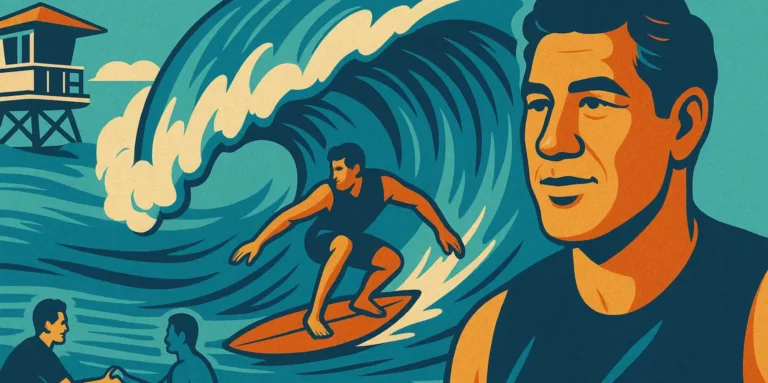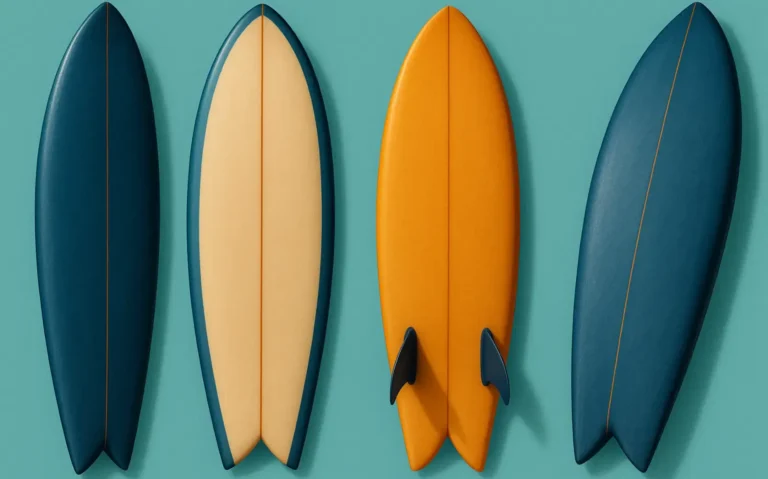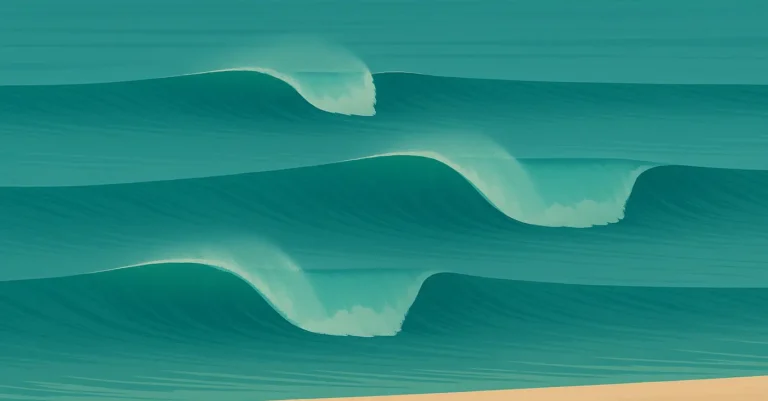Surfboards are complex constructions designed to harness the power of the ocean. Understanding the anatomy and hydrodynamics (also fluid dynamics) of a surfboard is essential, especially for more experienced surfers. This isn’t just important for board nerds and experienced surfboard shapers! As a surfer, you should have a basic understanding of hydrodynamics. This will help you choose the right board for the right conditions and, when the time comes, buy your own board with the features you want.
This guide breaks down the different parts of a surfboard and explains how each component works and what it affects.
The most important information in brief:
- Every design or construction element of a surfboard serves a purpose that is strongly related to hydrodynamics
- This is an introductory guide, so it will cover the most important design elements, not all of them
- There are combinations of different design elements, such as combinations of various nose and tail shapes, as well as bottom contours, to achieve desired board characteristics.
All Elements of a Surfboard
The illustration below shows the different parts of a surfboard, all of which serve their own purpose. For example, this influences the behavior in the water, such as water flow under your board, maneuverability, speed, and stability. There are countless different board shapes, yet they all feature the following parts or elements.
- Nose
- Tail
- Rails
- Deck
- Bottom
- Outline
- Rocker
- Stringer
- Glassed-on fins or fin plugs with removable fins
- Leash Plug and Leash
The various elements are explained in more detail below.
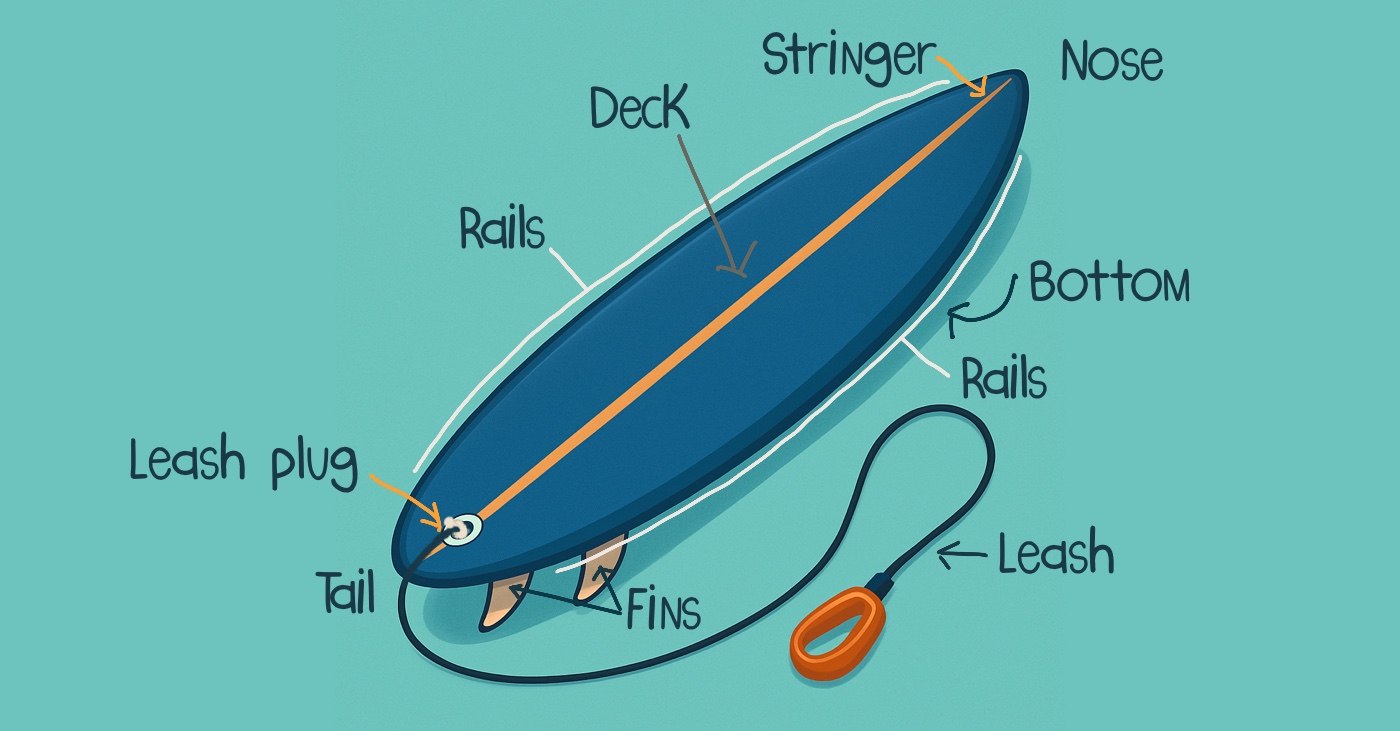
The Nose – Different Functions & Different Shapes
The shape of the nose(tip) of your surfboard has a significant influence on how it feels when paddling out to the lineup and when paddling into waves. The shape and size of the board tip determine how your board moves through or over the water. The three most common surfboard nose shapes are Round Nose, Pointed Nose, and Round-Pointed Nose. The former is particularly popular for longboards, the latter for shortboards. Round-Pointed Nose, however, is a combination of the two aforementioned nose shapes.
In our blog article, you can learn more about the different surfboard nose shapes, including the advantages and disadvantages of each nose form.
The Tail – Different Shapes for Control, Maneuverability, and More
Compared to the nose, the tail is almost always in the water and therefore has a significant impact on the board’s behavior in the water. Unless you’re doing aerial tricks with your board. The term “Heck” is hardly ever used.
As with the nose, there are also different shapes for the tail. However, they have a greater influence on performance, including speed, maneuverability, agility, and drive. Generally,
The three most common tails are shown below:
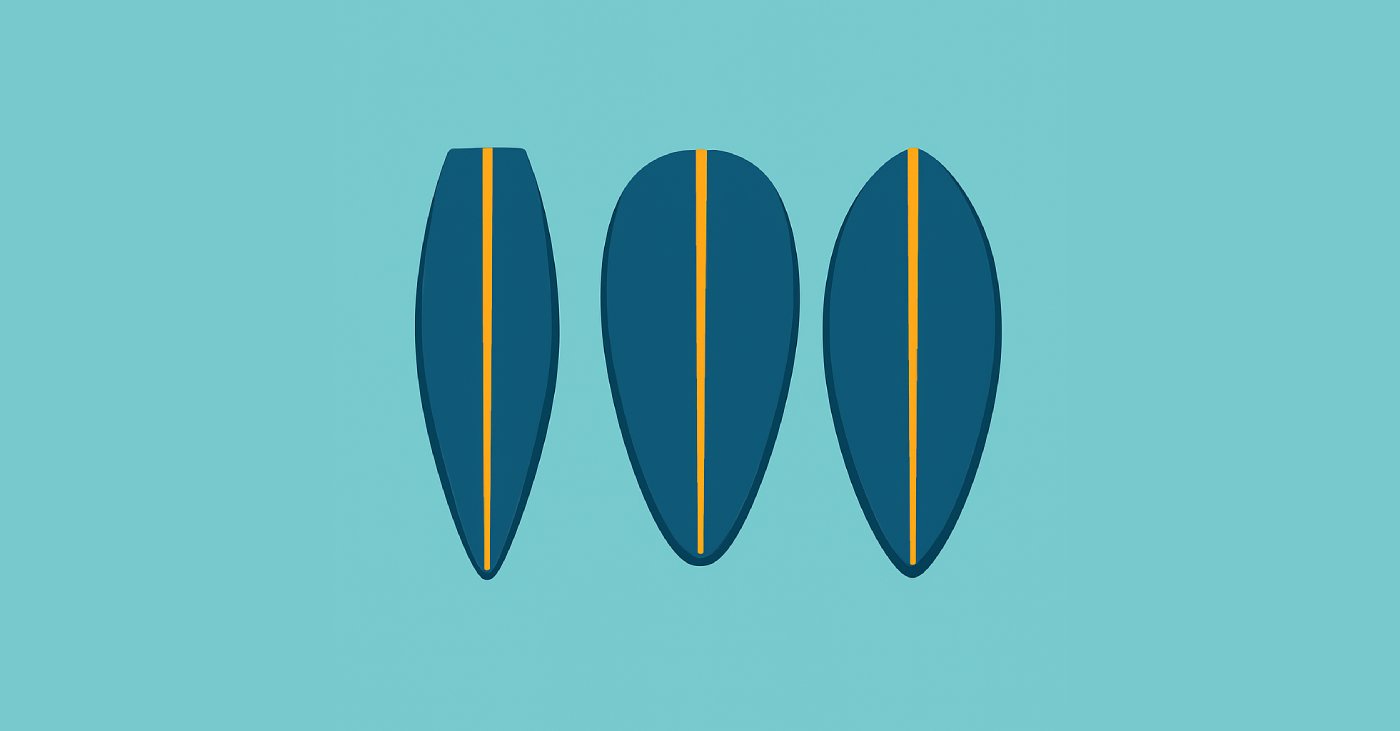
Rails of your Surfboard
The side edges (rails) of your surfboard run from the nose to the tail of the board. The performance of your board is heavily influenced by the shape of the rails, as they are crucial for how the board glides through the water.
In rail design, a distinction is made between Soft Rails and Hard Rails – this refers not to the hardness of the material, but to the shape.
- Soft Rails are rounded and are therefore referred to as “soft”. They offer more stability and make paddling easier, which is why they are particularly well-suited for longboards.
- Hard Rails, on the other hand, are more angular and sharply shaped – meaning they have sharper, “harder” edges. This construction provides more speed and allows for quick turns. However, Hard Rails are less forgiving and require more skill and control when surfing.
The Deck – your Board's Contact Point
The deck is the top side of your surfboard. You stand on it while surfing, which is why surf wax is applied to provide you with the necessary
- Step-Deck: The “step-like” deck is thicker in the middle, but flat. At the edges, it drops off like a step, which is where the name comes from.
- Flat-Deck: A uniform, flat top side with few curves towards the rails describes the visual characteristics of a Flat-Deck.
- Dome-Deck: The most common deck is widest in the middle, where it is slightly curved (“dome”, Eng. dome). The curve gently slopes outwards towards the rails, where the board is less thick.
- Concave-Deck: A special top-side contour with reduced foam along the stringer to lower the surfer’s center of gravity and provide more flex in the board.
The Different Deck Types in Cross-Section:
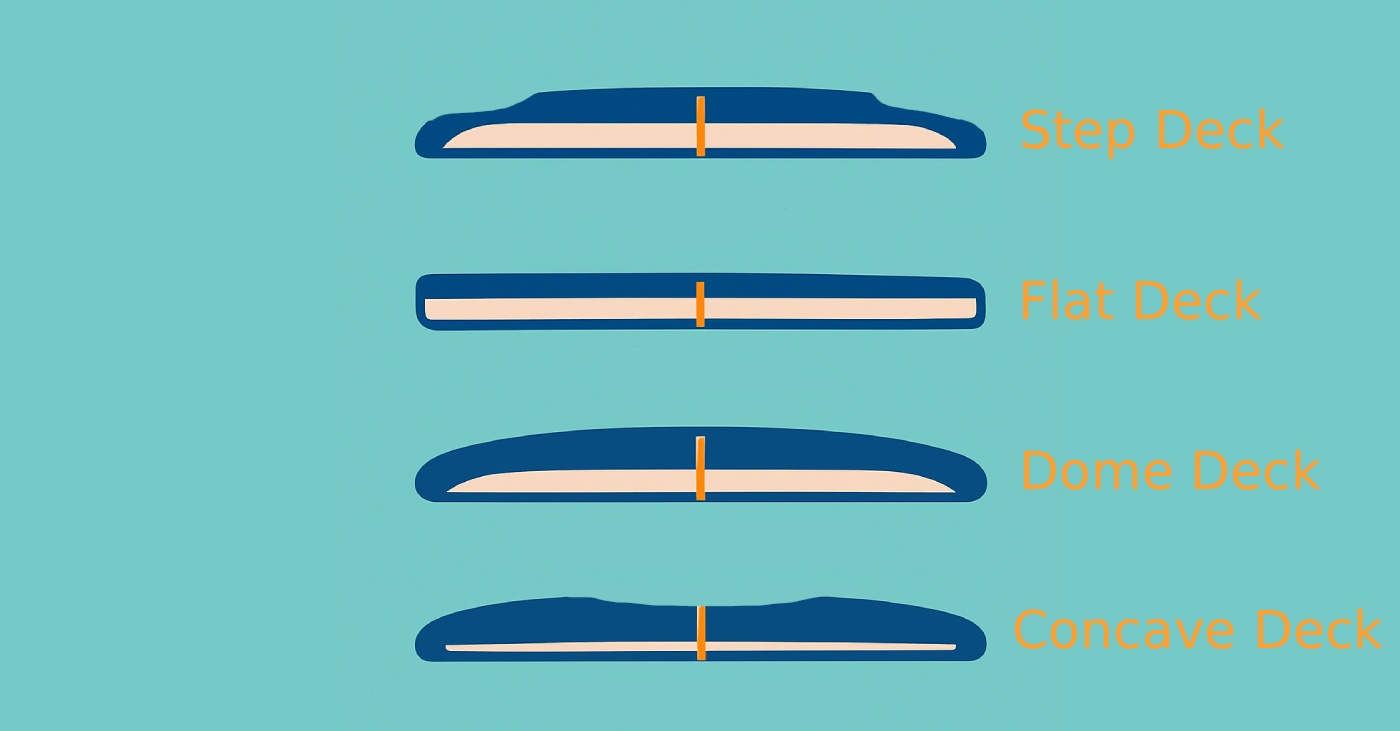
The Bottom – Influencing Water Flow
The underside of a surfboard rests on the water’s surface and is called the “Bottom”. This part of your board significantly influences how it behaves in the water. Because through the various concave, convex, or flat contours, the water flow on the underside is influenced.
The most common contours of a surfboard are:
- Flat: very fast, as there is no form drag from the surfboard.
- Vee (convex): less fast, but more maneuverable (easier rail-to-rail surfing)
- Belly (convex): Displaces more water and therefore slows the board down, but offers stability and control.
- Single-Concave (concave): less maneuverable, but very fast in the water, as the water is directed towards the tail. Rail Grip and Security, less maneuverability but speed
- Double-Concave (concave): Single-Concave with small features of the Vee, therefore less sticky in turns. Also directs the water to the tail. More of a “loose” (Eng. loose) surf feeling, as the water flowing over the concaves generates some lift.
- Channels (concave): Are similar to Concaves, but angular and provide more hold like a small fin.
A board usually consists of several combinations of contours. For example, it can transition from front to back from a Belly contour to a Double-Concave contour or a Vee, and then end in a flat contour or a Vee.
The Main Types of Bottom Contours in Cross-Section:
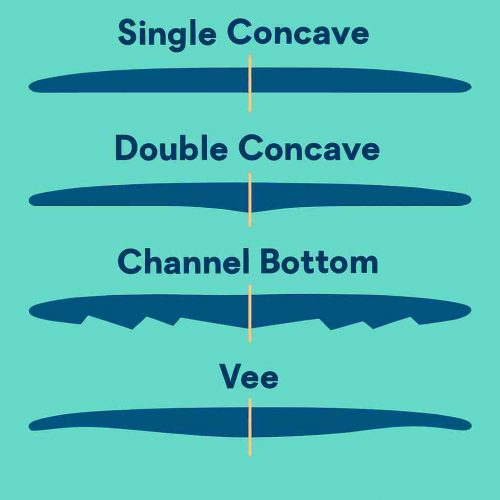
Outline – the Overall Contour of a Board
The outline refers to the contour or the shape of the board, which is also known as a template. It is determined by the combination of a surfboard’s dimensions, which are:
- Length: Measured not along the stringer, but vertically or horizontally. Depending on whether the surfboard is standing, being held by someone, or lying down.
- Width: Measured at the widest point of a surfboard, from rail to rail.
- Thickness: Measured at the thickest point from deck to bottom.
Aus den diesen Dimensionen an verschiedenen Stellen ergibt sich die Gesamtform (Shape), aus welcher sich das Volumen eines Surfbretts ergibt. Brettformen sind beispielsweise, Longboards, Shortboards, Funboards, Fish Surfboards.
Rocker – the Curve of your Board
The rocker indicates how curved or rockered a board is. The more pronounced it is, the more banana-shaped the board. The curve is measured in inches by the vertical distance from the ground on which the board rests, to the board tip or tail. A distinction is made between the nose, tail, and rail rocker. The rocker can be curved (heavy) or flat (relaxed).
- Flat Rocker: In the nose, a flat (also relaxed) rocker offers more speed and stability.
- Curved Rocker: Also known as “Heavy Rocker”, it improves maneuverability in the nose and prevents “pearling” in particularly steep waves.
Nose and tail rockers form a rail line rocker via the rail and blend into each other. Therefore, they must be coordinated for optimal water flow – otherwise, the board won’t work in the water.
Stringer
Mostly, the stringer consists of plywood and is located in the center of the surfboard, from nose to tail. The stringer strengthens the board and controls the flexibility of a surfboard. A stringer is not always built into the board! Modern boards made of epoxy foam or with carbon fiber are so stable that they don’t require one.
If the core of the surfboard is made of polyurethane and a larger surface area of a board flexes too much, one or more stringers are glued between the cut parts from a blank.
Fixed Glassed-on Fins or Fin Plugs with Removable Fins
With glassed-on fins (glass-on fins), these cannot be easily swapped, unlike with removable fin systems. Before removable fins existed, fins were always laminated to the board. Fins are like the steering wheel of a car for the surfboard.
If you have a board with a removable fin system, fin plugs or fin boxes are built into your board, into which the fins are inserted and secured.
The classic glassed-on fin variant is not very practical for traveling with the board, but it is very stable. Whereas removable fin systems like Future Fins and FCS provide more flexibility for your surf trip. Which is the best fin system depends on your preferences.
Leash Plug and Leash
The leash plug is laminated into the board at the tail. For big-wave boards, two leash plugs are often installed due to the enormous forces involved. The leash is connected to your board via a
Thanks to the leash, the board stays near you after a fall into the water, so you can quickly paddle back to the lineup. Furthermore, no one gets injured by a flying board.
In the history of surfing, the Polynesians already used a rope to secure the surfboard. Back then, a rope was tied around the waist – injuries were not uncommon. The leash as we know it today was accepted in the 1970s. For many core surfers, the surfing experience with a leash wasn’t pure enough, because after a mistake or wipeout, they often had to retrieve their lost board from the beach and paddle back to the lineup.

